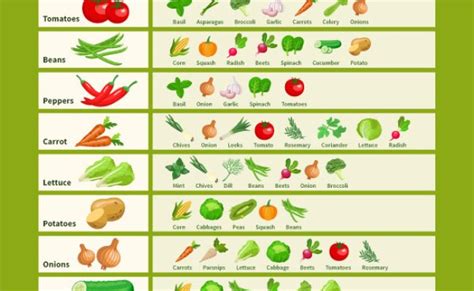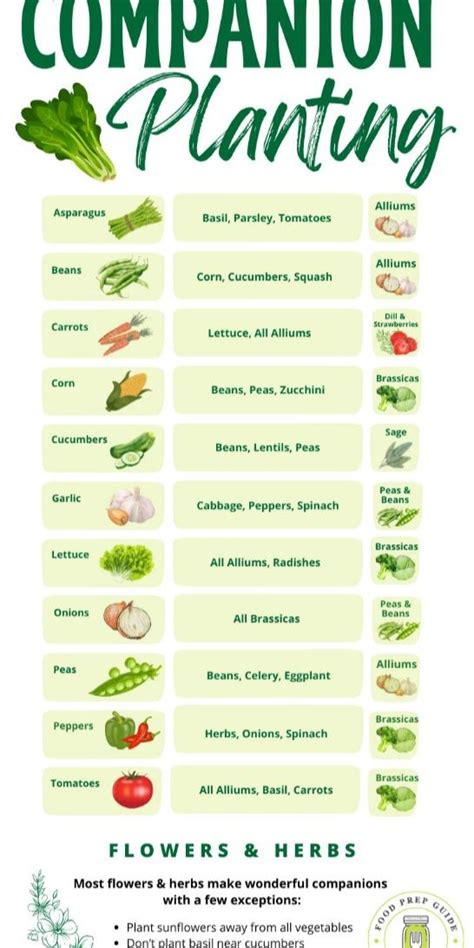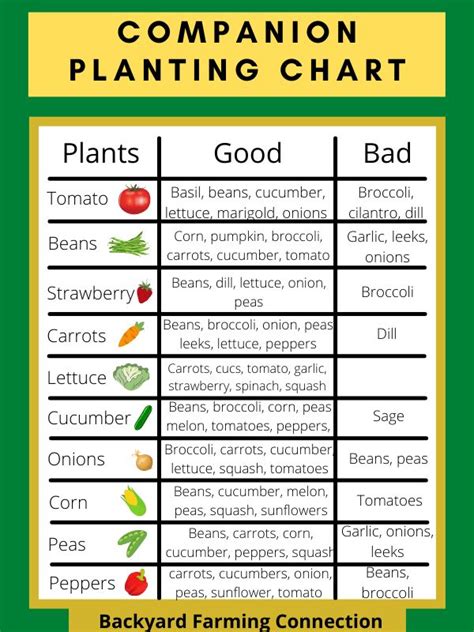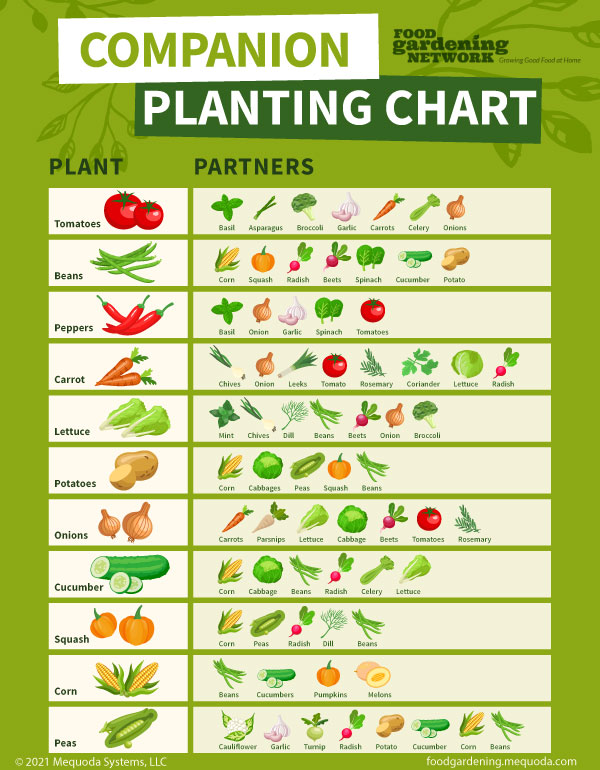Companion planting is a gardening technique where different plants are grown together to benefit each other. By strategically pairing plants, you can enhance growth, repel pests, and improve soil health naturally. This age-old practice not only promotes a thriving garden but also helps reduce the need for chemical fertilizers and pesticides. Whether you’re a seasoned gardener or just starting out, understanding the basics of companion planting can lead to a more productive and eco-friendly garden. In this guide, we’ll explore the benefits, tips, and best plant combinations to help you master companion planting.
shzow.com invites you to delve into this topic thoroughly.
1. Introduction
Companion planting, a long-held gardening practice, centers on cultivating diverse plant species in close proximity to promote mutual benefits. Rooted in nature’s symbiotic relationships, this method goes beyond mere arrangement; it’s a strategic approach to maximizing space, fostering soil health, repelling pests, and boosting overall plant vigor. By choosing plants with complementary attributes, gardeners can naturally enrich their crops, reducing reliance on synthetic fertilizers, pesticides, and herbicides.
The principle of companion planting is straightforward: certain plants, when cultivated together, can positively impact one another, enhancing their overall health. For instance, some plants deter harmful insects, while others enrich the soil with vital nutrients, fostering a flourishing environment for all.
This guide will introduce you to the fundamentals of companion planting, providing valuable insights for both new and seasoned gardeners. Whether your goal is to adopt organic pest control methods or maximize your garden’s harvest, companion planting offers a wide range of advantages that go beyond simply promoting healthy plants. As we delve deeper, you’ll find practical strategies, successful pairings, and essential tips to guarantee your companion planting endeavors are both effective and gratifying.

2. Benefits of Companion Planting
Companion planting offers numerous benefits that can transform a garden into a more sustainable and productive space. One of the primary advantages is natural pest control. Certain plants, such as marigolds or basil, have the ability to repel insects that could damage nearby crops, minimizing the need for chemical pesticides.
Moreover, companion planting enhances soil health. For instance, legumes have the ability to fix nitrogen in the soil, making it more fertile for other plants. This natural fertilization contributes to healthier plant growth and decreases reliance on synthetic fertilizers.
Another advantage is the ability to optimize space usage. By combining plants with varying growth habits, like towering sunflowers and sprawling cucumbers, gardeners can maximize the yield from their limited area.
Finally, companion planting promotes biodiversity, drawing in beneficial insects such as pollinators and predators that control harmful pests. This fosters a balanced ecosystem within the garden, leading to healthier plants and increased harvests. In essence, it offers an environmentally responsible and cost-effective approach to boosting garden productivity.

3. How to Choose Companion Plants
Choosing the right companion plants is essential for creating a balanced and productive garden. The key is to select plants that complement each other in terms of growth, nutrient needs, and pest control. Begin by researching plant pairings that are known to work well together. For example, tomatoes grow well with basil, which repels harmful insects, while beans are excellent companions for corn as they fix nitrogen in the soil.
Consider the needs of each plant in terms of sunlight, water, and space. Pair plants that have similar requirements to avoid competition. For instance, plants like carrots and onions thrive together because they have different root depths and do not compete for the same nutrients.
It’s also important to think about how plants can support one another. Tall plants like sunflowers can provide shade for sun-sensitive crops such as lettuce, while herbs like dill can attract beneficial insects that help protect neighboring plants.
To cultivate a flourishing and harmonious garden, it’s essential to avoid pairing plants that hinder each other’s growth. Some plants, such as fennel, have been known to impede the development of nearby crops. By carefully planning and closely observing your garden, you can select ideal plant companions that will foster a thriving and balanced ecosystem.

4. Common Companion Planting Combinations
Companion planting can significantly boost your garden’s health and yield. A tried-and-true combination is tomatoes and basil. Not only does basil enhance the flavor of tomatoes, but it also acts as a natural pest repellent, deterring insects like aphids and whiteflies that can damage tomato plants.
A highly effective planting trio is beans, corn, and squash, commonly known as the “Three Sisters.” The beans fix nitrogen in the soil, enriching it for the corn’s growth. In turn, the towering corn stalks offer natural support for the climbing bean vines. The squash, with its wide leaves, serves as a natural mulch, shielding the soil from the sun and hindering weed growth.
Carrots and onions form a beneficial pairing. Onions act as a natural deterrent to carrot flies, while carrots grow in a manner that avoids nutrient competition with onions.
Marigolds are a popular companion for many vegetables, especially in protecting against nematodes. Planting them alongside crops like lettuce, tomatoes, or beans can help keep these pests at bay.
Finally, planting herbs like dill or cilantro near cucumbers can attract beneficial insects, such as ladybugs, which prey on harmful pests. These combinations highlight how companion planting can create a balanced and healthy garden ecosystem.
5. Tips for Successful Companion Planting
To achieve success with companion planting, consider these essential tips for cultivating a thriving garden ecosystem. Firstly, conduct thorough research on compatible plant combinations. Understanding which plants benefit each other will allow you to maximize the advantages of companion planting. Utilize resources such as gardening books or online guides to discover proven pairings.
Secondly, consider the growth habits and space needs of your plants. By planting taller crops, such as tomatoes or sunflowers, near shorter plants, you can ensure that sunlight reaches all of them effectively. This vertical layering maximizes light exposure and makes the most of your available space.
Third, practice crop rotation annually. This helps prevent soil depletion and reduces the risk of pest and disease buildup. To maintain soil health, avoid planting the same plant families in the same location year after year.
Finally, be sure to check on your plants often for any signs of pests or unhealthy growth. By catching problems early, you can take action quickly and keep your garden thriving in harmony.
Finally, maintain a garden journal to record your observations and outcomes. By documenting your experiences with various companion plantings, you can fine-tune your techniques and enhance your garden’s yield over time. With these suggestions, you’ll be well on your path to a thriving and resilient garden.
6. Companion Planting Mistakes to Avoid
Companion planting, while a boon to many gardens, can easily be sabotaged by common mistakes. One of the most crucial aspects is understanding plant compatibility. Not all plants coexist harmoniously, and some pairings can actually impede growth or invite pests. For instance, planting dill near carrots can negatively impact the carrots’ growth. It’s imperative to consult trustworthy sources to ensure your chosen pairings are truly beneficial.
Overcrowding is another common error. Although companion planting seeks to maximize space utilization, cramming too many plants into a limited area can result in competition for essential resources such as nutrients, water, and sunlight. It’s crucial to provide ample space for each plant to grow and flourish.
Another pitfall to avoid is neglecting plant growth habits. For example, placing tall plants beside shorter ones can obstruct sunlight, hindering the shorter plants from receiving sufficient light. Utilize vertical space wisely by arranging plants in layers based on their height.
Furthermore, overlooking soil health can hinder your gardening endeavors. A thriving garden depends on healthy soil, so regularly enriching it with compost and organic matter is crucial.
Lastly, neglecting seasonal variations can negatively impact plant growth. Certain plants are sensitive to temperature fluctuations and necessitate planting during specific times. Be mindful of your local climate and plant accordingly to prevent underwhelming results. By avoiding these pitfalls, you can fully reap the rewards of companion planting and cultivate a flourishing garden.
7. Conclusion
In conclusion, companion planting presents a sustainable and effective method for boosting your garden’s productivity and health. By carefully pairing plants, gardeners can leverage natural pest control, improved soil health, and efficient space utilization, fostering a harmonious ecosystem that benefits all participating plants. Comprehending the advantages and mastering the art of choosing appropriate companions are essential elements for achieving gardening success.
As you embark on your companion planting journey, remember to conduct thorough research, monitor your plants regularly, and document your experiences to refine your strategies over time. Learning from both successes and mistakes will help you grow as a gardener and achieve a flourishing garden.
Companion planting offers a wealth of possibilities, from the traditional blend of corn, beans, and squash to the symbiotic relationship between tomatoes and basil. By strategically planning and understanding the growth habits of your plants, you can cultivate a flourishing garden that thrives naturally, reducing the reliance on chemical treatments.
Ultimately, companion planting not only improves yields but also fosters a deeper connection with nature, encouraging biodiversity and environmental stewardship. By implementing these practices, you will cultivate a garden that is not only productive but also a source of joy and satisfaction.
shzow.com
